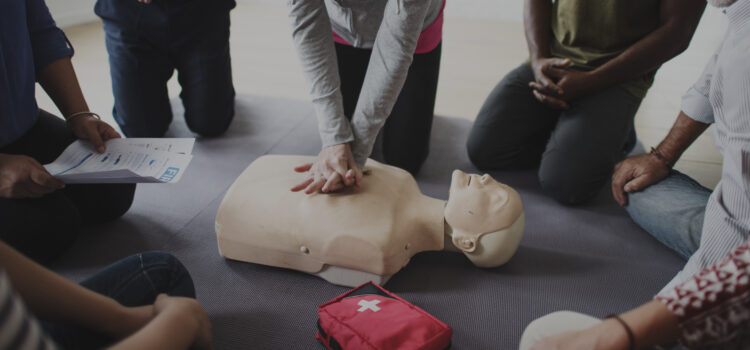
High school health class is looking a little different, as California recently passed legislation requiring grades 9-12 to undergo CPR training.Thankfully, the Kern High School District has already begun implementing this requirement into its curriculum.
To teach hands only CPR, KHSD has bought CPR kits. Because the District requires all students to take a health course, all students will get the opportunity to learn CPR, even online.
Ryan Geiet, KHSD Director of instruction, shares that despite the transition to online format due to COVID-19, health instructors have adapted to distance learning and are still providing students hands-only CPR training virtually as it can still be taught without the kits.
“You don’t need to be certified to perform CPR. Community CPR, or Hands-Only CPR, is a skill that everyone should know and it’s made up of two simple steps,” the American Heart Association said. “If you see a teen or adult suddenly collapse: step 1 is to call 9-1-1; and step two is to push hard and fast on the center of the chest until help arrives.”
According to the American Heart Association data collected In the year 2019-2020, a total of 11,215 community members of Kern County were trained in Hands-Only CPR, CPR corporate training and training for healthcare workers. As of today, 38 states in the United States require Cardiopulmonary Resuscitation (CPR) training as part of the high school graduation requirements.
Many say it’s imperative to undergo CPR training. This life-saving technique is performed to maintain blood flow from the heart to the brain and other vital organs. The red blood cells of the body carry oxygen to the brain. The brain uses 20 percent of body oxygen intake, according to the University of Rochester Medical Center. The heart can stop beating just about anywhere, including while exercising, playing sports, running errands, at home, or work.
According to a report from the US Occupational Safety & Health Administration, there are approximately 10,000 cardiac arrests in the workplace each year in the United States. According to a 2020 analysis of 2015-2017 data conducted by the American Heart Association, more than 356,000 out-of-hospital cardiac arrests occur each year, and of these incidents, 90 percent lead to death.
When the heart stops, the brain is not receiving any oxygen. According to MedlinePlus, the human brain can survive oxygen deprivation for about four minutes and may lose consciousness within 15 seconds. But, within 4-6 minutes brain cells begin to die without oxygen, which may cause permanent damage or death.
According to a 2017 study on emergency medical services (EMS) response time, it took an average of seven minutes for EMS to arrive on the scene. The median response time doubled in rural areas. The study concludes that based on research that bystander intervention can be effective in saving a life. Rescue efforts can be initiated by activating the emergency response system by calling 9-1-1 and performing first aid or CPR if they are trained before the arrival of EMS. This response may be extremely vital for the survival of one who lost their pulse or breathing.
Other efforts in Kern County to learn CPR includes the 2020 partnership with Kern Family Health Care, the AHA provides new parents with children born in the NICU with American Heart Association Infant CPR Anytime Kits to train on the lifesaving skill during the COVID-19 pandemic. These kits contain materials to learn skills of infant CPR and choking relief in the comfort of their own home. The kit has both English and Spanish instructions and is reusable so it can be shared with relatives and anyone that may be responsible for their infant’s care.